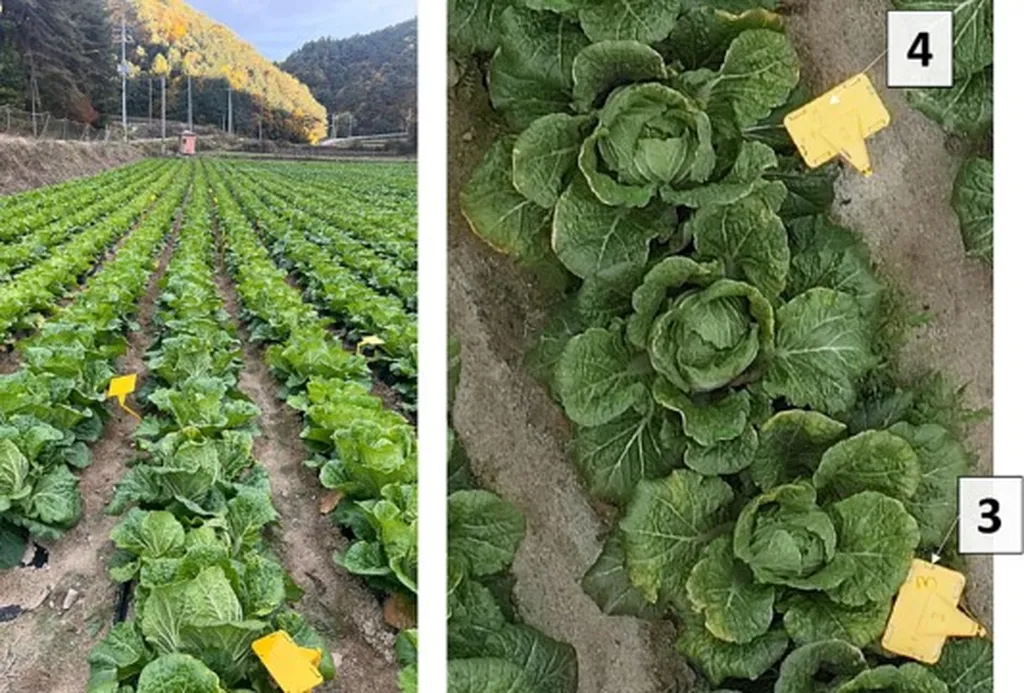In the heart of Krakow, Poland, a groundbreaking study led by Magdalena Szechyńska-Hebda at the W. Szafer Institute of Botany of the Polish Academy of Sciences is revolutionizing how we detect and manage plant diseases. The research, published in the journal ‘Agronomy’ (which translates to ‘Field Management’ in English), focuses on the application of hyperspectral imaging for early detection of pathogen-induced stress in cabbage, a globally significant vegetable crop. This innovative approach could reshape the agricultural landscape, offering a non-invasive, real-time solution to combat fungal and bacterial pathogens that threaten crop productivity.
Cabbage, a staple in diets worldwide, faces significant challenges from pathogens like Alternaria brassicae and Botrytis cinerea. Traditional methods of detecting these diseases often rely on visible symptoms, which appear only after the pathogen has caused considerable damage. However, Szechyńska-Hebda’s research introduces a game-changing technique: hyperspectral imaging. This method captures detailed spectral data, enabling the identification of pathogens before visible symptoms manifest.
“Hyperspectral imaging allows us to see beyond the visible spectrum,” explains Szechyńska-Hebda. “By analyzing specific spectral ranges, we can detect subtle changes in the plant’s physiological and biochemical responses to pathogen attack. This early detection is crucial for implementing timely and targeted disease management strategies.”
The study highlights significant spectral changes in cabbage leaves infected by Alternaria brassicae and Botrytis cinerea. These changes occur in various spectral ranges, corresponding to different biochemical components such as flavonoids, chlorophyll, carotenoids, xanthophyll, anthocyanin, phenols/mycotoxins, water/pigments content, and polyphenols/lignin. By targeting these specific spectral ranges, the research demonstrates the potential for early and accurate pathogen detection.
The implications of this research extend beyond the agricultural sector. In the energy sector, where biomass from crops like cabbage is increasingly used for bioenergy production, early detection of pathogens can ensure a healthier and more robust feedstock. This, in turn, can enhance the efficiency and sustainability of bioenergy production, contributing to a more resilient energy sector.
Moreover, the integration of hyperspectral imaging with machine learning algorithms opens new avenues for precision agriculture. By automating the detection and analysis process, farmers can make data-driven decisions, optimizing resource use and minimizing environmental impact. This synergy between advanced imaging techniques and artificial intelligence could pave the way for smarter, more sustainable farming practices.
As we look to the future, the potential of hyperspectral imaging in disease management is immense. “This technology is not just about detecting diseases; it’s about empowering farmers with the tools they need to protect their crops and ensure food security,” says Szechyńska-Hebda. By embracing these innovative techniques, we can foster a more resilient and productive agricultural system, benefiting both farmers and consumers alike.
In conclusion, the research led by Magdalena Szechyńska-Hebda at the W. Szafer Institute of Botany of the Polish Academy of Sciences represents a significant leap forward in the field of plant pathology. Published in ‘Agronomy’, this study underscores the transformative potential of hyperspectral imaging in early disease detection, offering a beacon of hope for sustainable agriculture and a more secure food future.

